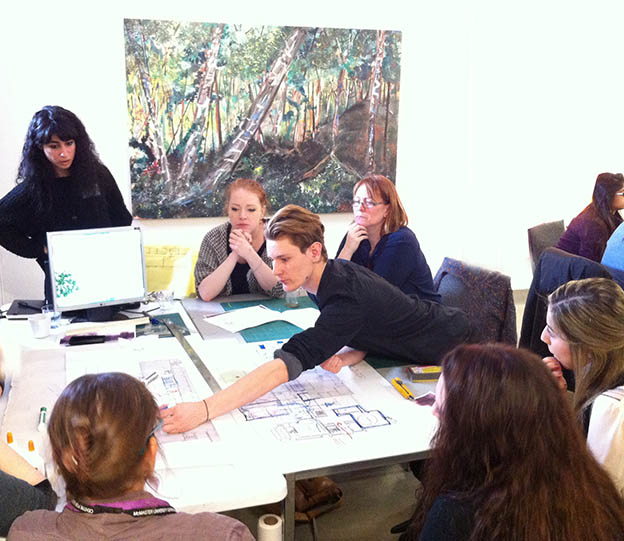‘Possibilities endless’ for new Fitzhenry Studios

School of the Arts students, faculty and alumni met with architects from David Premi Architects Tuesday to talk about what the Dr. Robert and Andrée Rhéaume Fitzhenry Studios and Atrium could look like.
It was an opportunity to “put their wishes into a hat.”
That’s how associate professor Judy Major-Girardin described Tuesday’s design charrette on the School of the Arts’ new studios and atrium.
The day saw students, faculty and alumni from the School meet with architects and planners to brainstorm what the Dr. Robert and Andrée Rhéaume Fitzhenry Studios and Atrium could look like.
The space was made possible thanks to a $3-million gift – the largest ever made to the Fine Arts program – from alumnus Robert Fitzhenry, in honour of his late wife Andrée.
Participants analyzed everything from lighting and ventilation to the size of the elevators needed to transport people and art from floor to floor.
Third year fine arts student Cassandra Ferguson was interested in the exterior of the building and the message it would send to the rest of the campus community.
“The design of the building speaks to what we’re all about in the School of the Arts,” she said. “So having a space that looks more pleasing – that looks like an art institution – will be great.”
The current studios were first built in the 1960s in Togo Salmon Hall and feature an on-site foundry, one of only a handful in the country available to fine arts students. Originally designed to accommodate 15 young artists at a time, the program and demands for the space have grown.
When the new construction is complete, the atrium will cover an existing outdoor courtyard workspace, enlarging the display area and studio footprint of the building’s lower level by 1700 square feet.
The atrium will function as a reception area with the façade facing Stearn Drive, where campus visitors, students, staff and faculty will be able to see the art making process in progress.
Fitzhenry has been a longtime supporter of the university, investing in priorities which include the Robert Fitzhenry Specialized Rehabilitation and Exercise Lab, the stadium, dance studio, and the McMaster vector lab, which provides the delivery agents used to transport gene therapies or vaccines in patients.
He graduated with an honours BA degree in political economy in 1954 and would eventually partner with Robert Beamish in the 1970s to build the Woodbridge Foam Corporation into a world class business in the international high-tech manufacturing sector.

